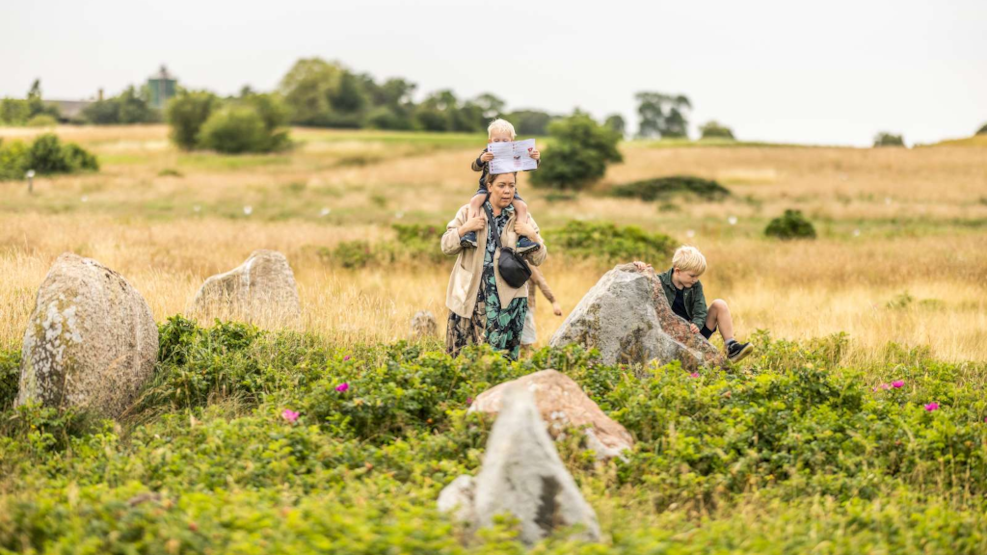
The stone circles on Hjarnø
On Hjarnø, there are 10 well-preserved ship settings from the Viking Age that can easily be visited during a day trip to the island. The "Kalvestenene," which have inspired intriguing legends, is one of the best places in Denmark to witness visible signs of the Viking Age in the landscape.
Where the Vikings lived, the Vikings were buried
Close to the southeastern coast of Hjarnø lies a visible and well-preserved relic from the Viking Age. In the protected area near Odden, you can see 10 ship settings from the period 850-950. Originally, there were more than 20 ship settings in this burial ground. The graves can be viewed as a pagan manifestation in a time when Christianity was gaining ground in the country. The ship settings are a religious symbol of the deceased's connection to the Nordic gods—specifically Njord, whose symbol is a ship. Choosing a ship-shaped grave was a way to invoke good sailing and hunting from Njord.
The ships are up to 8 meters long and consist of upright standing stones. Three of the graves have been archaeologically excavated, revealing that the deceased had been cremated before burial—a well-known and common practice in the Viking Age.
The ship settings serve as monuments to powerful men or women who governed the island and, consequently, the entrance to Horsens Fjord.
King Hjarne's burial site
An old legend tells that the legendary figure King Hjarne is buried in the ship settings.
In the 5th century, the Danish king Frode Fredegod died and lay dead on his funeral pyre. However, they couldn't light the pyre because his sons were not there to sing a death song for the king. Therefore, the Jutlandic warrior, Hjarne, stepped forward before the assembly and sang a song so beautiful that the Jutes subsequently declared him the new king of Jutland. Hjarne consolidated his royal power on the island named after him. Here, he married the warrior woman Alrune, who was given the neighboring island Alrø. Together, they had a son named Endlau, to whom they assigned the island Endelave. The Jutlandic royal family thus consolidated their power at the entrance to Horsens Fjord.
However, peace did not last in King Hjarne's Jutlandic kingdom. Soon, Frode Fredegod's sons returned from their Viking expeditions and declared war on King Hjarne. It ended in a great battle where King Hjarne, his kin, and his Jutish army were killed. The legend says that the new King Fridleif still wanted to honour King Hjarne by burying him in the ship settings that still stand on Hjarnø to this day.
The story of King Hjarne is merely a myth recorded by Saxo, but a few years ago, a young woman found Denmark's largest gold treasure on Hjarnø. The treasure was from the same period and indicates that Hjarnø was home to powerful families. However, it is uncertain who was buried in the stone settings.
Explore Hjarnø
Hjarnø is a small island at the entrance to Horsens Fjord, offering a delightful, authentic Danish island atmosphere. The ferry runs 30 times a day, and the journey takes only five minutes. The island provides tranquility, beautiful nature, as well as dining options, accommodation, and shops.
From the harbour, you can follow a signposted route east along the south side of Hjarnø. From the island's church, which is Denmark's second smallest, follow a path down to Hjarnø Odde. After passing the small lake at Odden, you will find the Kalvestenene stone settings on your left.
You can find inspiration for your trip to Hjarnø on this page.